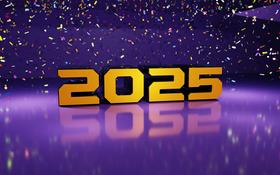For the 2025-26 school year, there are 4 public schools serving 1,582 students in Clarendon Hills, IL (there are 3 private schools, serving 444 private students). 78% of all K-12 students in Clarendon Hills, IL are educated in public schools (compared to the IL state average of 88%). Clarendon Hills has one of the highest concentrations of top ranked public schools in Illinois.
The top ranked public schools in Clarendon Hills, IL are Prospect Elementary School, Walker School and Clarendon Hills Middle School. Overall testing rank is based on a school's combined math and reading proficiency test score ranking.
Clarendon Hills, IL public schools have an average math proficiency score of 75% (versus the Illinois public school average of 27%), and reading proficiency score of 69% (versus the 30% statewide average). Schools in Clarendon Hills have an average ranking of 10/10, which is in the top 1% of Illinois public schools.
Minority enrollment is 36% of the student body (majority Asian), which is less than the Illinois public school average of 56% (majority Hispanic).
Best Public Schools in Clarendon Hills, IL (2025-26)
School
(Math and Reading Proficiency)
(Math and Reading Proficiency)
Location
Quick Facts
Rank: #11.
Prospect Elementary School
(Math: 80-84% | Reading: 75-79%)
Rank:
Rank:
10/
Top 1%10
130 N Prospect Ave
Clarendon Hills, IL 60514
(630) 861-4400
Clarendon Hills, IL 60514
(630) 861-4400
Gr: K-5 | 313 students Student-teacher ratio: 10:1 Minority enrollment: 29%
Rank: #22.
Walker School
(Math: 75-79% | Reading: 75-79%)
Rank:
Rank:
10/
Top 1%10
120 Walker Ave
Clarendon Hills, IL 60514
(630) 861-4600
Clarendon Hills, IL 60514
(630) 861-4600
Gr: K-5 | 295 students Student-teacher ratio: 10:1 Minority enrollment: 24%
Rank: #33.
Clarendon Hills Middle School
(Math: 72% | Reading: 64%)
Rank:
Rank:
10/
Top 5%10
301 Chicago Ave
Clarendon Hills, IL 60514
(630) 861-4800
Clarendon Hills, IL 60514
(630) 861-4800
Gr: 6-8 | 475 students Student-teacher ratio: 10:1 Minority enrollment: 29%
Rank: n/an/a
5800 Holmes Ave
Clarendon Hills, IL 60514
(630) 515-4810
Clarendon Hills, IL 60514
(630) 515-4810
Gr: PK-2 | 499 students Student-teacher ratio: 13:1 Minority enrollment: 55%
Frequently Asked Questions
What are the top ranked public schools in Clarendon Hills, IL?
The top ranked public schools in Clarendon Hills, IL include Prospect Elementary School, Walker School and Clarendon Hills Middle School. Clarendon Hills has one of the highest concentrations of top ranked public schools in Illinois.
How many public schools are located in Clarendon Hills?
4 public schools are located in Clarendon Hills.
What percentage of students in Clarendon Hills go to public school?
78% of all K-12 students in Clarendon Hills are educated in public schools (compared to the IL state average of 88%).
What is the racial composition of students in Clarendon Hills?
Clarendon Hills public schools minority enrollment is 36% of the student body (majority Asian), which is less than the Illinois public schools average of 56% (majority Hispanic).
Which public schools in Clarendon Hills are often viewed compared to one another?
Popular comparisons of public schools in Clarendon Hills include: Walker School vs. Prospect Elementary School, Prospect Elementary School vs. Walker School, Holmes Elementary School vs. Walker School
Recent Articles

Texas Schools Enrollment Trends & Policy in 2025
Latest data and policy changes on Texas public school enrollment growth, funding, and virtual education in 2025.

Financial Aid & Hidden Costs in Public Schools
Learn about financial aid and hidden costs in public schools. Discover what parents should budget for beyond tuition-free education.

NYC Schools Still Most Segregated in 2025
Despite reforms, New York City schools remain the most segregated in the U.S. in 2025. Here’s what parents and educators need to know.
